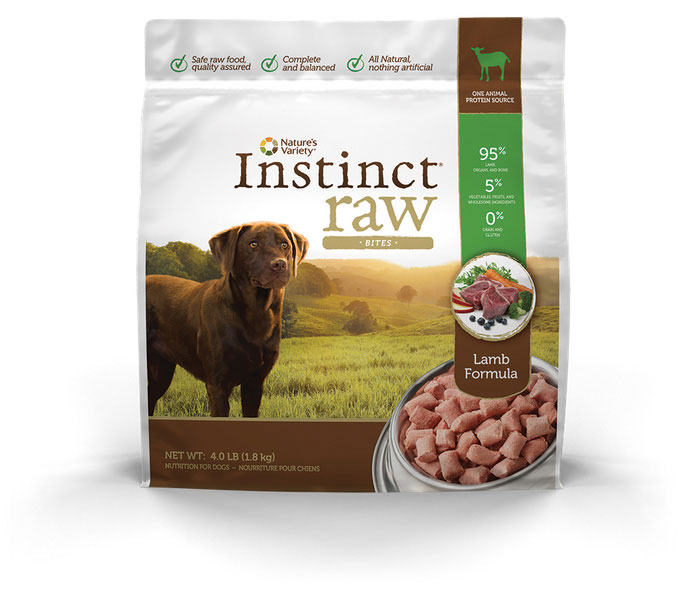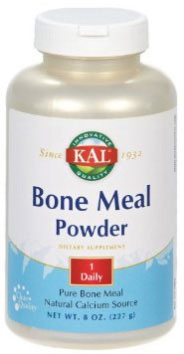Doing Raw Right for Pets
When it comes to raw, there are 3 ways to approach it:
- Purchase a store-bought prepared raw food.
- Mix a part-raw and part-cooked diet.
- Purchase the raw ingredients and feed them directly to your pet.
NOTE: Please be very careful when transitioning pets with a pre-existing GI disease to a raw food diet. If not transitioned carefully (see "Transitioning From Cooked to Raw" below) under the guidance of a knowledgeable vet, your pet may experience a worsening of their condition.
Learn about raw food diets for pets...
Home Made vs. Store Bought
 A home made diet requires understanding the principles of a raw food diet and ensuring the diet is balanced. This does NOT simply consist of feeding your pet a bowl of raw meat. A healthy raw food diet consists of a balanced blend of raw meat, organs, bone, fruits, and vegetables. If the important elements are not present, nutritional deficiencies are very likely to occur.
A home made diet requires understanding the principles of a raw food diet and ensuring the diet is balanced. This does NOT simply consist of feeding your pet a bowl of raw meat. A healthy raw food diet consists of a balanced blend of raw meat, organs, bone, fruits, and vegetables. If the important elements are not present, nutritional deficiencies are very likely to occur.
If this is beginning to sound more challenging than you originally thought, yes - it definitely can be.
The great news is that more and more pet food manufacturers are offering raw food options in the freezer section of pet food stores. A substantial amount of work goes into ensuring the diet is a nutritionally sound balance of raw muscle meat, organ meat, and raw bone meal, with small quantities of vegetables and fruits.
It is important to choose a reputable brand and ensure that the food is always kept frozen or refrigerated and used promptly. If not, you increase the risk of food poisoning and parasites.
The main drawback to a store bought diet is that it can be expensive due to rigorous and stringent quality control. But it is also a much more nutritionally balanced food. Some of the more popular brands of raw food diets for pets include:
Nature's Variety Instinct Raw Frozen (dogs & cats)
Primal Raw (dogs & cats)
BARF World (dogs)
Aunt Jeni's Home Made (dogs & cats)
Stella & Chewy's Raw Frozen (dogs, and freeze-dried raw for cats)
Vital Essentials Raw Frozen (dogs & cats)
K9 Raw Frozen (dogs)
Darwin's Natural Pet Products (dogs)
Northwest Naturals (dogs)
Part Raw / Part Cooked
Many people feed their pets a combination of cooked and raw foods, including myself. Mixing raw food in with a high quality commercial pet food or home-cooked diet is a great way to give a big nutritional boost to their meals. And it does not involve the challenge of including bone meal, organs or other ingredients necessary to balance out a 100% raw diet.
Another wonderful way to both give your pets a healthy nutritional boost and give their food a burst of flavor is to prepare a bone broth at home. The excess can be frozen and it can last weeks.
Creating a Home-Made Raw Diet
Once the basic principles are understood, anybody can prepare a balanced raw food diet at home for their furry friend. The main ingredients include:
- Muscle & organ meats or fish (75% for dogs, slightly higher for cats)
This includes lamb, chicken, beef, rabbit, bison, turkey, and other popular meats. The addition of oily fish such as mackerel and sardines are wonderful fish choices.  Veggies & fruits, pureed (25%)
Veggies & fruits, pureed (25%)
This includes carrots, peas, potatoes (sweet potato and yams are the most nutritious of the starchy veggies and should be cooked and mashed to increase digestibility), and other similar veggies. Prepare the starch in a batch to last several days and store it in the fridge.- Bone meal (including fish bone meal)
This can be from bones ground in a meat grinder, or purchased as a supplement that can contain other beneficial vitamins, minerals, and probiotics. Make sure it is a high quality mix and that no ingredients are sourced from or prepared in China. - Garlic (fresh chopped)
Dr. Pitcairn, well respected veterinarian and author of Dr. Pitcairn's Complete Guide to Natural Health for Dogs & Cats, recommends the following amount based on weight:
10-15 pounds: 0.5 clove
20-40 pounds: 1 clove
45-70 pounds: 2 cloves
75-90 pounds: 2.5 cloves
100 pounds+: 3 cloves
Contrary to misinformation and distorted facts, garlic is neither toxic nor dangerous for dogs (unless your pet has a diagnosed condition that would contraindicate garlic). There are several wonderful health benefits from including garlic in their meals. ...Read more
Why Veggies & Starches?
When canines eat in the wild, the organs, stomach, and intestines of the prey are usually the first items that are instinctively eaten due to their high nutritional content. Fruits and veggies are found in "pureed form" in the stomach of prey after grazing on plant food. This is why fruits and veggies are included in small quantities in a raw diet. Other items eaten in prey (such as hide and hair) act as insoluble fibers, and this is mimicked by using viborous veggies.
Bones
Always include raw bones in your dog's diet. Cooked bones are more brittle and have a much higher likelihood of splintering and injuring your dog internally. Learn more about the benefits of raw bones.
Bones - nature's toothbrush...
Transitioning From Cooked to Raw
Changing a pet's diet too quickly can result in diarrhea and other gastrointestinal issues - whether transitioning to raw, or to any another type of diet or different food brand. People often incorrectly transition their dog or cat to a raw diet, and then blame the raw food for health issues such as diarrhea. Most digestive upsets occur when we do not take the time to carefully integrate these new foods at the right pace.
ALWAYS transition slowly, replacing small quantities of the old food with the new food. The transition should take at least 1 week to allow your pet's digestive system to properly adjust from a processed diet to a raw one.
RELATED ARTICLES
- Why pets are getting sicker
- Healthy & balanced pet diet
- Tips on choosing a healthy pet food
- Home-cooked diet
- Raw food diet for pets
- Doing raw right for pets
- Home-baked doggy treats
- Bones - nature's toothbrush
- Bone broth recipe
- Pet food recalls
- Treating common pet injuries
- Pet-proofing your home
- Preparing for a new pet!
- Fleas, ticks, & mosquitoes
- Natural dog grooming
- Pet dental care
- Pet vaccinations
- Declawing



